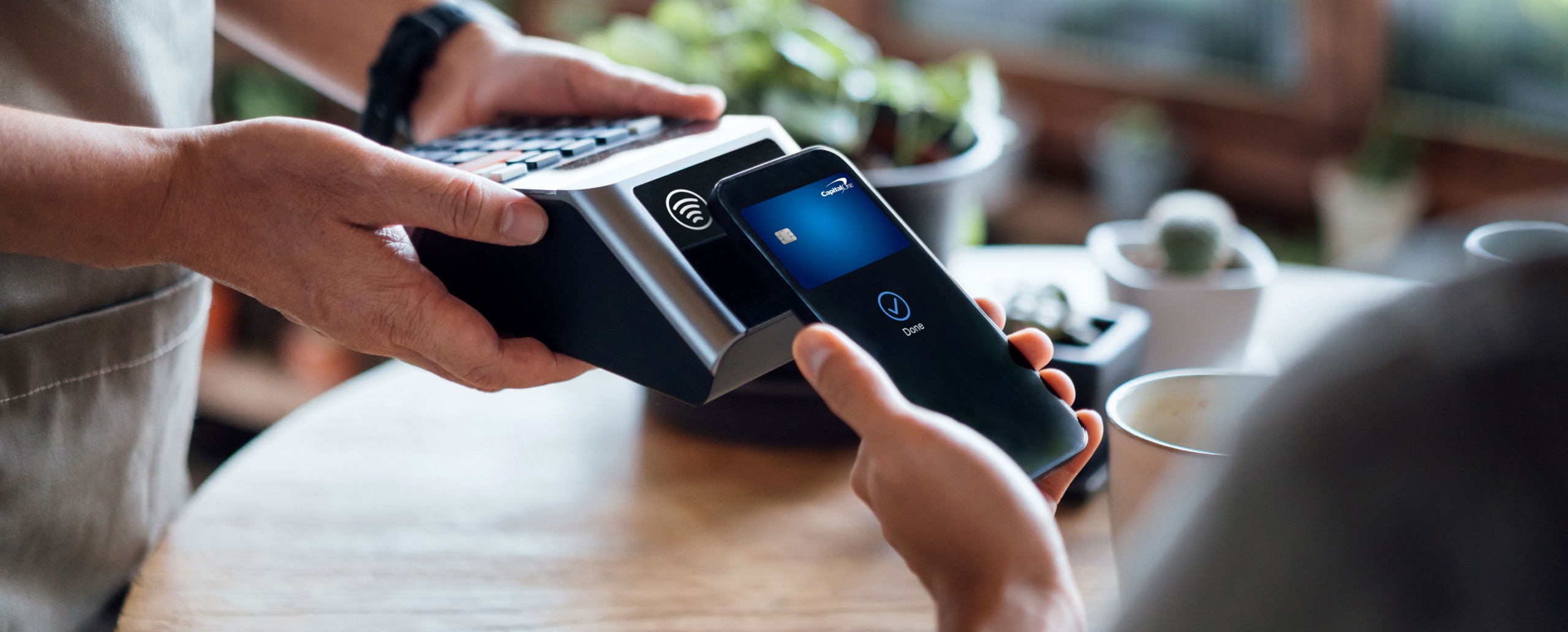.svg)

QR codes have become a go-to bridge between offline and online marketing but they’re no longer the only option. As brands aim to deliver smoother, faster, and more engaging mobile experiences, a new wave of technologies is stepping in to do what QR codes can’t: connect users instantly, with fewer barriers and more creativity. In this guide, we’ll explore ten powerful QR code alternatives that help marketers capture attention, improve user flow, and create seamless digital interactions. Whether you’re optimizing customer journeys or experimenting with next-gen engagement tools, these options can elevate your mobile marketing strategy beyond the square.
Mobilo's digital business card helps you do just that. It pairs NFC tap to share, short links, deep links, mobile landing pages and lightweight analytics so contacts open your profile without an app and you measure real conversions.

Marketers place QR codes on posters, product packaging, business cards, trade show booths, menus, and ads to create a direct bridge from a printed surface to a mobile experience. A quick scan launches a landing page, app store listing, video, contact card, or payment flow.
Brands track scans to measure engagement and A/B test campaigns. Why do people still reach for QR codes when they appear everywhere?
An alternative to a QR code means any method that links a person or an object to digital content or services without requiring a visual scan of a black and white matrix.
That includes:
Which one fits a project depends on range, security, data capacity, power needs, and cost.
A QR Code alternative refers to technologies or methods that offer other ways to encode and share information. They differ in range, security, persistence, and the kinds of interactions they enable.
Alternatives shine where QR codes struggle: secure reads, passive tracking, hands free discovery, and richer storage. On the other hand, those alternatives often lack the universal simplicity, low cost, and broad ecosystem that make QR codes useful in many situations.
QR codes hold a limited amount of data. You can embed a URL or a short plain record, but you cannot store full maintenance logs, multiple linked files, or layered access rules inside the code itself. For equipment that needs a rich digital record, that constraint forces extra systems and manual linking.
Anyone with a smartphone can scan a QR code, which creates a weak point when a code points to sensitive information. QR scans do not provide native encryption or authentication. If you need verified reads, controlled access, or audit trails, choose a technology with secure transmission and identity features.
Printed codes suffer in harsh environments. Scratches, chemical exposure, dirt, and fading make codes unreadable. In outdoor, industrial, or high abrasion settings, physical damage kills reliability quickly and forces frequent reprinting or protective fixtures.
QR codes require line of sight and a person with a scanner to capture data. That makes them poor for monitoring assets in transit, tracking items across a campus, or receiving immediate alerts about location changes. When you need remote, continuous, or automated sensing, look beyond optical tags.
Technologies like NFC, RFID, and encrypted BLE connections enable authenticated reads and secure handshakes. Systems can restrict access by role, record who accessed a tag, and encrypt the payload in transit. Which industries benefit most when you add encryption and access control to tagging?
BLE beacons, RFID with linked cloud records, and smart tags let you push or pull detailed metadata, versioned documents, and maintenance histories. A single tag can reference a cloud record that evolves over time, so the physical marker stays simple while the backend holds complex data.
For large facilities or moving assets, passive scanning and automated sensing remove the need for manual scanning. RFID gates, BLE readers, and GPS trackers capture presence and motion without human intervention, saving time and reducing missed reads.
GPS and cellular trackers provide continuous geolocation while an item moves. That capability supports logistics, theft prevention, and dynamic routing in ways a static printed code cannot match.

NFC stands for near field communication. A small passive tag stores a web link or data and a phone with NFC enabled reads it when the user touches or taps the tag. The phone then opens the programmed action such as a web page, contact card, or app store listing.
NFC delivers one touch contactless sharing without requiring a camera app, which keeps the interaction fast and elegant on a digital business card or smart poster. Use NFC for physical business cards with embedded chips, event badges that push your contact details, retail displays that open product pages, or direct app installs during an offline campaign.
SnapTags wrap a scannable code ring around any image so the image itself becomes the barcode. Users photograph the SnapTag or scan it with an app and receive the linked content by app or SMS response.
SnapTags preserve brand aesthetics while enabling visual scanning, which suits premium print collateral, packaging, and digital business cards where design matters. They fit campaigns that need a branded look plus contactless link sharing and work well when you want alternative SMS delivery.
Image recognition systems treat a picture as an activation key. A branded app scans a product image or scene and the software matches it to stored metadata, then serves interactive content or commerce options.
Image recognition removes visible codes and supports scan to shop or scan for details within a mobile app. Apply it to catalogs, product labels, property listings, and loyalty programs where customers scan an object to get pricing, stock, or next steps.
Beacons broadcast Bluetooth low energy signals to nearby smartphones. When a device with the right app detects the beacon, it can trigger a push notification, open a promotion, or update in store experiences.
Beacons power proximity marketing and contextual engagement without touching or scanning. Use them inside stores to greet customers, deliver aisle specific coupons, speed up click and collect workflows, or add location aware content to events and trade shows.
Microsoft Tag used a high capacity color barcode to encode links and data. Tags were dynamic so the destination link could be updated after printing, and usage analytics tracked scans.
When active, Tag codes let marketers change landing pages without reprinting and measure engagement. They suited print campaigns and packaging that needed aesthetics and analytics, though the original Microsoft Tag service was discontinued and later carried forward under other platforms.
Google Goggles was an image recognition app that identified landmarks, translated text in photos, and returned search results from a picture. Users pointed the camera and received contextual information.
The app showed how visual search can replace typed queries and supported discovery based marketing. The app is discontinued and users now rely on Google Lens for visual search and scan based interactions in mobile marketing.
Data Matrix is a two dimensional barcode that encodes data in a grid of black and white cells. It supports alphanumeric content and fits into small footprints while remaining machine readable.
Data Matrix works well for compact product labels, inventory tags, and logistics where space is tight. Use it for serialized components, warranty registration, and manufacturing traceability when you need barcode alternatives that fit on small surfaces.
RFID tags use radio waves to exchange data with readers. Passive tags power up from the reader signal and transmit their ID, while active tags include their own power source for longer range.
RFID enables bulk scanning and encrypted asset tracking without line of sight, making it ideal for warehouses, supply chain, and high volume inventory. Use RFID where quick throughput and hands free scanning matter, such as pallet tracking, retail inventory audits, and secure asset control.
Bluetooth Low Energy beacons transmit small packets that nearby devices can detect continuously. Apps or platforms interpret those signals to infer proximity and trigger workflows.
BLE beacons support continuous asset tracking and location aware services inside a facility, including equipment monitoring, temperature or motion sensors, and in hospital or logistics environments. They fit situations where ongoing proximity data and status updates improve operational efficiency.
GPS trackers receive satellite signals to determine location and then report that position via cellular or other networks to a monitoring platform. They provide live coordinates and route history.
GPS trackers give accurate long distance tracking for vehicles, shipments, and heavy equipment in transit. Use them for logistics, fleet management, construction site machinery, and any use case that requires continuous location updates while assets move across regions.

Match the technology to the asset you manage. High value equipment that needs security and non contact access works better with RFID tags or NFC enabled tags than with printed QR codes. Items in transit need location tracking, so GPS trackers or cellular trackers make sense for pallets and vehicles.
If you run an office and track laptops or monitors, NFC enabled tags provide easy smartphone reads and can store ownership or serial data. For ultra precise indoor location, consider UWB tags.
Ask yourself:
Is the asset stationary most of the time or constantly moving across sites?
Decide how much information the tag must carry. If you only need an ID and link to a record, QR codes or passive RFID are fine. When you need maintenance logs, sensor readings, or environmental telemetry, use BLE beacons or IoT sensors that push telemetry to the cloud.
BLE devices can supply temperature, humidity, shock, and battery status alongside an identifier. Think about data volume, read frequency, and whether the system requires edge processing or cloud storage.
For assets that require constant location updates while moving, GPS or cellular trackers provide real time position and geofencing. For assets that stay inside a building but need periodic checks, BLE beacons or passive RFID reads work well.
If you need proximity detection for access control or contactless exchange of business card data, NFC provides an immediate smartphone experience. Consider update cadence, latency tolerance, and whether you need history for audits or just current status.
Choose tag types built for the conditions. Printed QR codes fail fast in dusty, oily, wet, or high abrasion settings. Metal surfaces and high temperature also reduce QR reliability. Use rugged RFID tags or sealed NFC tags where exposure, moisture, or handling is common.
For extreme environments use encapsulated passive tags or active trackers rated to the right IP level. Evaluate mount method, expected wear, and cleaning or sterilization procedures.
Balance upfront cost with operating expense. QR codes and printable smart labels cost almost nothing to deploy, but they demand manual scanning and offer limited features. RFID readers and infrastructure raise initial cost but lower labor for large fleets.
GPS trackers come with hardware and subscription fees for SIM and data plans. BLE beacons often need battery swaps and maintenance. Calculate total cost of ownership, including readers, tags, installation, maintenance, and any cloud subscriptions.
Different sectors push you toward different solutions. Healthcare benefits from non contact tags like NFC or passive RFID that are easy to clean and help with chain of custody for devices.
Logistics often demands GPS trackers for end to end visibility and sensors for cold chain monitoring.
Retail can use BLE beacons or NFC enabled cards to deliver product pages and promotions to shoppers. Check regulatory rules for tracking, data retention, and device sterilization in your field.
Think beyond pilot scale. QR codes scale by printing more labels but add manual scanning labor as volume grows. RFID and BLE scale better in dense environments because they support bulk reads and automated inventories.
Assess network load, tag density, reader placement, and cloud limits. Plan for tag provisioning, unique identifiers, and database growth so the system can handle thousands or millions of items.
Confirm the alternative integrates with your asset management, ERP, or CRM. Look for APIs, webhooks, and import export options. With itemit you can use QR codes or choose:
Trackers while keeping all asset data in one platform. Check for ready connectors to maintenance systems, CMMS, and reporting tools. Ask whether the solution supports standard data formats such as vCard for digital business cards or JSON for telemetry so you avoid costly custom development.
Which tradeoffs are you willing to accept: low cost and manual work, or higher cost and more automation?

Mobilo replaces paper cards and clumsy QR code scans with smart digital business cards that exchange contact data automatically. Your team taps or brings devices close and the contact moves instantly into a prospect record.
The platform enriches that record with company and role details, scores the lead against your ideal customer profile, and pushes clean data into your CRM. Over 59,000 companies use Mobilo to boost event performance and field outreach. Ready to see how this shifts results at your next show?
QR codes solve a problem but they add friction: open camera, aim, wait. Mobilo uses NFC business cards and tap to exchange tech so people share details without scanning.
Other QR code alternatives in use across sales teams include:
These options deliver touchless transfer, faster capture, QR free sharing, and richer analytics than image based scans.
After a contact is shared, Mobilo enriches the record with firmographic and contact data, appends role and company size, and evaluates fit against your ICP. You get a scored prospect so reps see priority at a glance.
Rules can route hot leads to account executives, flag ABM targets, or trigger nurture sequences. What does this change in practice? Reps spend time on prospects that actually match your sales model, not on manual data entry.
Mobilo integrates with Salesforce, HubSpot, Microsoft Dynamics, and via API or Zapier to other systems. It maps fields, prevents duplicates, and syncs in real time so leads appear in the right owner’s queue.
Admins control field mappings, team settings, and routing logic from a central portal. This reduces missed follow ups and keeps your pipeline usable for forecasting and outreach.
At events, teams use NFC cards, badge tags, and contactless displays to capture attendees who would skip a QR or business card swap. Mobilo collects opt in data on the spot, adds behavioral tags like booth visits, and surfaces who engaged most.
You get booth analytics, lead heat maps, and rep-level performance so follow up is fast and relevant. Want a template for staffing and routing at your next show?
Mobilo encrypts transfers, supports consent capture, and stores personal data with configurable retention policies to help meet GDPR and other rules. Access controls limit who views enriched profiles.
Tokens and secure API calls keep integrations safe. This lets teams capture high quality leads while keeping privacy and compliance visible and manageable.
Setup uses a web portal for provisioning, card design, and CRM connections. Training takes a few sessions and admins manage users and analytics centrally.
For trial and rollout, Mobilo offers your first 25 cards free (worth $950) so you can test with a sales pod or events team. Book a demo today to see a live walkthrough and claim the free cards.